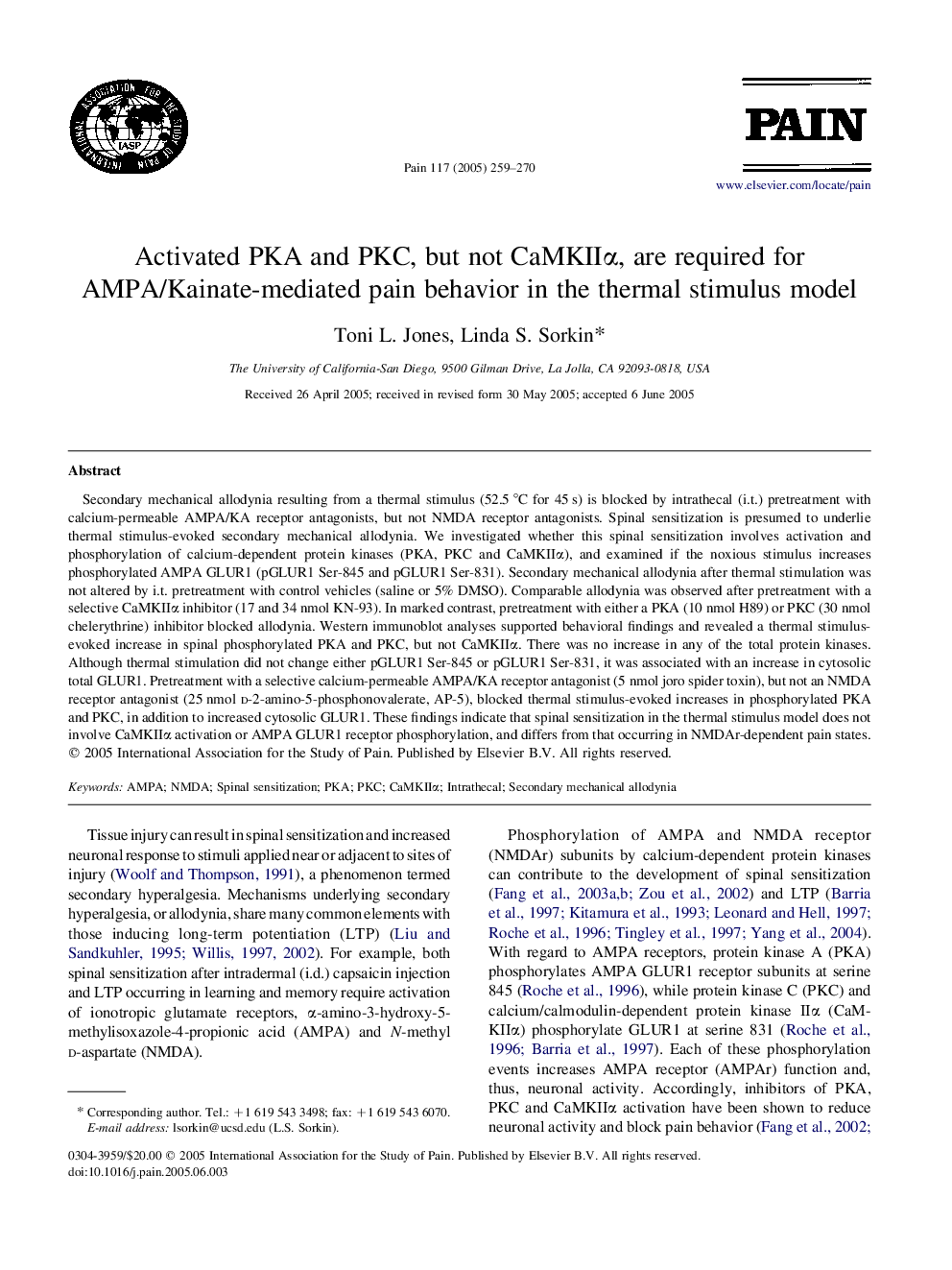| کد مقاله | کد نشریه | سال انتشار | مقاله انگلیسی | نسخه تمام متن |
|---|---|---|---|---|
| 10451512 | 918466 | 2005 | 12 صفحه PDF | دانلود رایگان |
عنوان انگلیسی مقاله ISI
Activated PKA and PKC, but not CaMKIIα, are required for AMPA/Kainate-mediated pain behavior in the thermal stimulus model
دانلود مقاله + سفارش ترجمه
دانلود مقاله ISI انگلیسی
رایگان برای ایرانیان
موضوعات مرتبط
علوم زیستی و بیوفناوری
علم عصب شناسی
علوم اعصاب سلولی و مولکولی
پیش نمایش صفحه اول مقاله

چکیده انگلیسی
Secondary mechanical allodynia resulting from a thermal stimulus (52.5 °C for 45 s) is blocked by intrathecal (i.t.) pretreatment with calcium-permeable AMPA/KA receptor antagonists, but not NMDA receptor antagonists. Spinal sensitization is presumed to underlie thermal stimulus-evoked secondary mechanical allodynia. We investigated whether this spinal sensitization involves activation and phosphorylation of calcium-dependent protein kinases (PKA, PKC and CaMKIIα), and examined if the noxious stimulus increases phosphorylated AMPA GLUR1 (pGLUR1 Ser-845 and pGLUR1 Ser-831). Secondary mechanical allodynia after thermal stimulation was not altered by i.t. pretreatment with control vehicles (saline or 5% DMSO). Comparable allodynia was observed after pretreatment with a selective CaMKIIα inhibitor (17 and 34 nmol KN-93). In marked contrast, pretreatment with either a PKA (10 nmol H89) or PKC (30 nmol chelerythrine) inhibitor blocked allodynia. Western immunoblot analyses supported behavioral findings and revealed a thermal stimulus-evoked increase in spinal phosphorylated PKA and PKC, but not CaMKIIα. There was no increase in any of the total protein kinases. Although thermal stimulation did not change either pGLUR1 Ser-845 or pGLUR1 Ser-831, it was associated with an increase in cytosolic total GLUR1. Pretreatment with a selective calcium-permeable AMPA/KA receptor antagonist (5 nmol joro spider toxin), but not an NMDA receptor antagonist (25 nmol d-2-amino-5-phosphonovalerate, AP-5), blocked thermal stimulus-evoked increases in phosphorylated PKA and PKC, in addition to increased cytosolic GLUR1. These findings indicate that spinal sensitization in the thermal stimulus model does not involve CaMKIIα activation or AMPA GLUR1 receptor phosphorylation, and differs from that occurring in NMDAr-dependent pain states.
ناشر
Database: Elsevier - ScienceDirect (ساینس دایرکت)
Journal: Pain - Volume 117, Issue 3, October 2005, Pages 259-270
Journal: Pain - Volume 117, Issue 3, October 2005, Pages 259-270
نویسندگان
Toni L. Jones, Linda S. Sorkin,